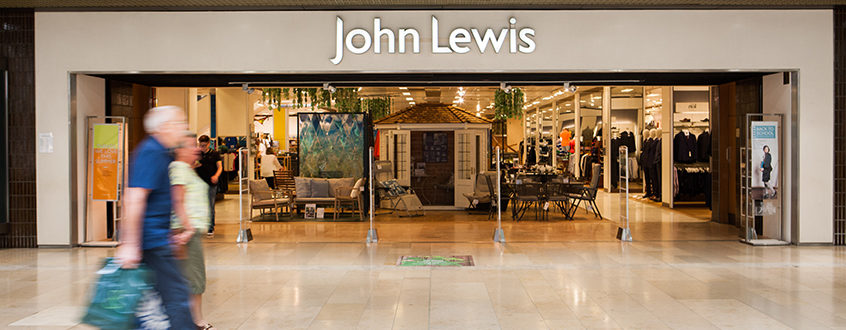Paula Nickolds: reinventing John Lewis for the long term
Paula Nickolds may have had a tumultuous start to her tenure as John Lewis’s new managing director but she is poised to guide the department store head-first into the future, writes Deirdre Hipwell
One imagines that while becoming the first female boss of John Lewis was right up there in Paula Nickolds’ list of career goals, she might have preferred to achieve her aim during a more benign period for Britain’s retail sector.
In fact, the new boss of John Lewis said as much when she took to the roof garden on top of its Oxford Street store to host a dinner for the press last week.
Paula Nickolds may have had a tumultuous start to her tenure as John Lewis’s new managing director but she is poised to guide the department store head-first into the future, writes Deirdre Hipwell
[caption id="attachment_885571" align="alignright" width="300"] Paula Nickolds[/caption]
One imagines that while becoming the first female boss of John Lewis was right up there in Paula Nickolds’ list of career goals, she might have preferred to achieve her aim during a more benign period for Britain’s retail sector.
In fact, the new boss of John Lewis said as much when she took to the roof garden on top of its Oxford Street store to host a dinner for the press last week.
In the seven months since she took over from Andy Street, she has had to cope with a surprise election result, another rise in minimum wage, cost price inflation (for a retailer that imports two-thirds of the products it sells) and a structural shift in shopping trends which is arguably hitting the department store model the most.
Despite all these challenges she is surprisingly cheerful.
Nickolds, who started out 23 years ago in the haberdashery division at John Lewis, said the retailer was currently seeing some “interesting behaviour” from its customers.
While John Lewis’s sales are still up on this time last year, the biggest spending is taking place in its beauty halls and fashion departments. However, “deferrable spend” on major purchases, such as flat-screen TVs or fitted kitchens, is currently trading just behind last year’s levels. This may be an outcome of rising inflation coupled with falling real wages but any fall in big-ticket purchases is always concerning.
However, for most retailers, the first half is just a dress rehearsal for the second half and John Lewis is no different. About 40% of its profits are made in the five weeks to Christmas and, as ever, it is all still to play for this year. Nickolds knows this better than most.
But aside from managing the daily cut and thrust of competition on the high street, she also has a job to position John Lewis, an employee-owned organisation, for the long term.
When she took over as John Lewis’s managing director, the first thing the former graduate trainee did was head to the retailer’s Berkshire archive to remind herself how the business has been “reinventing itself” since 1884.
From carrying out daily food service deliveries to caravans and holiday homes in the 1950s and demonstrating how TVs worked in the 1960s, Nickolds believes John Lewis has always succeeded by being “close” to and understanding its customers.
She is not alone in making this claim. Nowadays, pretty much every retailer professes to be “close” to its customers. And when they are not preaching about “big data”, they are spouting management guff about “taking customers on a journey” (to the till, one presumes).
Such is the focus on the shopping experience and “the customer journey” that all the staff at the new store attend theatre school as part of their training to help build confidence.
However, John Lewis does seem to be putting its money where its mouth is. It is clearly working hard to provide ever-greater experiences and services in its 48 stores at a time when footfall is dwindling and sales at e-tail giant Amazon continue to soar.
Nickolds says John Lewis’s new store in Oxford, which opens in October, will exemplify the retailer’s best practice. About a fifth of the store’s space will be devoted to services ranging from food outlets to eyebrow threading, an optician and fashion-styling services, among others.
Shoppers will be met by concierges when they arrive and there will be a store manager of “brand experience” responsible for staging an in-store event every single day of the year. Such is the focus on the shopping experience and (yes, you guessed it) “the customer journey” that all the staff at the new store attend theatre school as part of their training to help build confidence.
Alongside greater in-store experiences, John Lewis is also targeting £1bn of own-brand sales in its homewares department by 2020 while increasing its fashion credibility.
Nickolds has kicked off a host of other initiatives aimed at improving the retailer’s famed customer service abilities. This includes providing two-hour delivery slots with drivers who can also carry out up to 45 services from installing washing machines to assembling a customer’s barbecue. John Lewis now has two technical centres where 850 drivers are being trained to provide a host of services.
It is clear that John Lewis is the best positioned of the country’s department store retailers by quite some margin (have you been into a House of Fraser recently?). But there is no doubt it too is finding the going much tougher.
Annual bonuses for its 86,700 “partners”, who co-own the business, have fallen for four consecutive years and the real challenge facing Nickolds is charting a “journey” that not only titillates fickle shoppers and drives profits but also builds up that bonus again.
Deirdre Hipwell is retail and M&A editor at The Times











